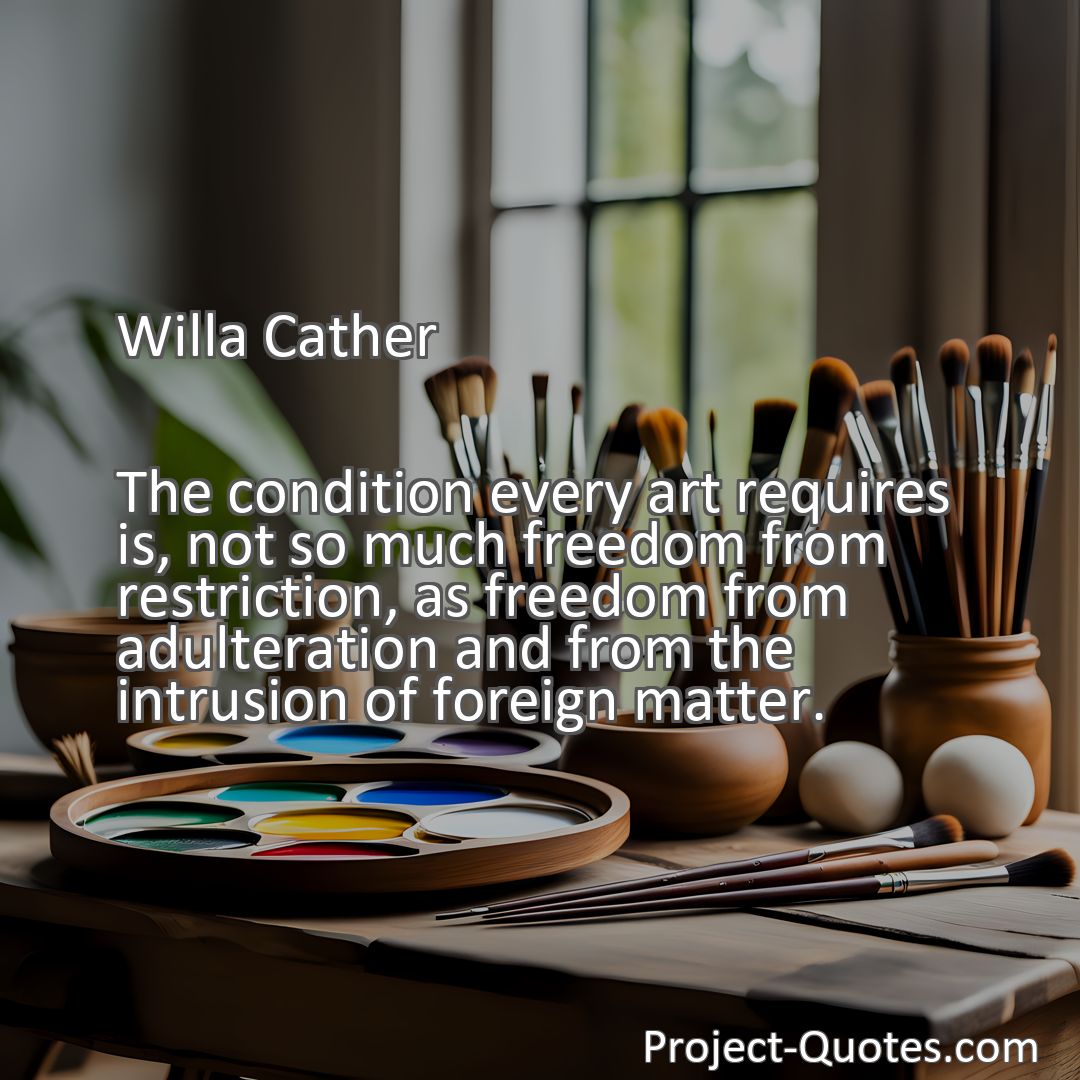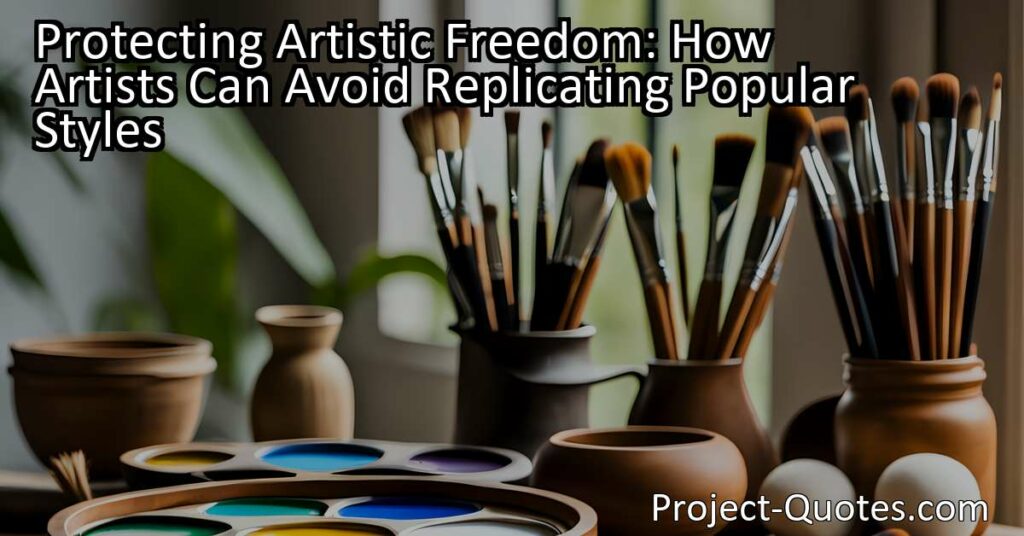The condition every art requires is, not so much freedom from restriction, as freedom from adulteration and from the intrusion of foreign matter.
Willa Cather
In the world of art, artists may unknowingly reproduce popular styles, diluting their work and lacking originality. Acclaimed author Willa Cather emphasizes the importance of protecting artistic freedom by avoiding the replication of popular styles. By creating boundaries, finding solitude to focus on their craft, and filtering influences, artists can ensure their work remains authentic and true to their own creative spirit.
Table of Contents
- 1 The condition every art requires is, not so much freedom from restriction, as freedom from adulteration and from the intrusion of foreign matter.
- 2 Willa Cather
- 3 Meaning of Quote – The condition every art requires is, not so much freedom from restriction, as freedom from adulteration and from the intrusion of foreign matter.
- 4 Freely Shareable Quote Image
- 5 Related
Meaning of Quote – The condition every art requires is, not so much freedom from restriction, as freedom from adulteration and from the intrusion of foreign matter.
In the world of art, whether it be painting, writing, or music, there is a crucial element that every artist seeks: freedom. But what does this freedom truly entail? According to acclaimed author Willa Cather, it is not simply freedom from restriction that is necessary for an art form to flourish, but rather freedom from the dilution and contamination of external influences.
As we delve into Cather’s insightful statement, let us first explore the concept of freedom from restriction. In any artistic pursuit, it is easy to assume that complete creative liberty is essential for the artist to fully express themselves. However, Cather argues that boundaries can actually enhance the artistic process. These boundaries shape the artist’s focus and propel their creativity in unexpected ways. A painter, for example, may find inspiration in the limitations presented by a specific color palette or the confined space of their canvas. Similarly, a writer may discover new depth in their storytelling by adhering to a particular genre or writing style.
But, as Cather points out, it is not only freedom from restriction that artists require. They must also safeguard their work from adulteration and the intrusion of foreign matter. In today’s world of constant connectivity and widespread information, it is all too easy for outside influences to seep into an artist’s work. This could manifest in the form of mimicry, as artists may inadvertently replicate popular styles or themes without injecting any originality. It is important for artists to cultivate their own unique voice, separate from the noise of trends and expectations.
One way to combat this potential adulteration is by creating in a bubble, shielded from external influences. It is in these moments of solitude and introspection that an artist can truly focus on their craft, allowing their ideas to flow freely without the interference of external forces. For a writer, this may mean finding solace in a quiet study or an isolated park bench. A painter may seek inspiration on a peaceful nature retreat, far away from the persistent chatter of the art world. By creating a space and time dedicated solely to their artistic practice, artists can ensure that their work remains pure and untouched by the ever-changing tides of external opinions.
Yet, even when artists protect their work from direct intrusion, they must also be wary of the indirect influences that permeate their lives. We are products of our environment, and every experience we undergo shapes our creative spirit. Cather urges artists to be conscious of the foreign matter that may seep into their work, whether it be from cultural norms, societal expectations, or personal biases. By carefully examining these influences, artists can separate what is true to their own artistic vision from the external noise that may obscure it.
To truly achieve this kind of artistic freedom, Cather suggests artists must engage in a continuous process of self-reflection and introspection. By understanding their own perspectives, strengths, and weaknesses, artists can distill their work into its most authentic form. This involves constantly questioning and challenging oneself, as well as embracing vulnerability and self-expression.
Additionally, while Cather’s statement speaks specifically to the artistic process, it also holds relevance beyond creative endeavors. It serves as a reminder that freedom from adulteration and the intrusion of foreign matter is valuable in our daily lives as well. In a world that bombards us with external influences, it is important to cultivate our own authentic voices and beliefs. By engaging in self-reflection and questioning the sources of our beliefs, we can ensure that our thoughts and actions align with our true selves rather than being shaped by the expectations of others.
In conclusion, Willa Cather’s profound statement emphasizes the importance of true artistic freedom. It goes beyond mere freedom from restriction, recognizing that boundaries can actually enhance the creative process. The crucial aspect, as Cather suggests, is to safeguard one’s work from adulteration and the intrusion of external influences. By cultivating spaces and moments of solitude, artists can protect their creative endeavors from dilution. Additionally, artists must remain mindful of the foreign matter that may unconsciously seep into their work and consciously filter influences to ensure authenticity. By heeding Cather’s words, aspiring artists can cultivate their craft, producing work that is undeniably unique and true to their own creative spirit.
I hope this quote inspired image brings you hope and peace. Share it with someone who needs it today!


